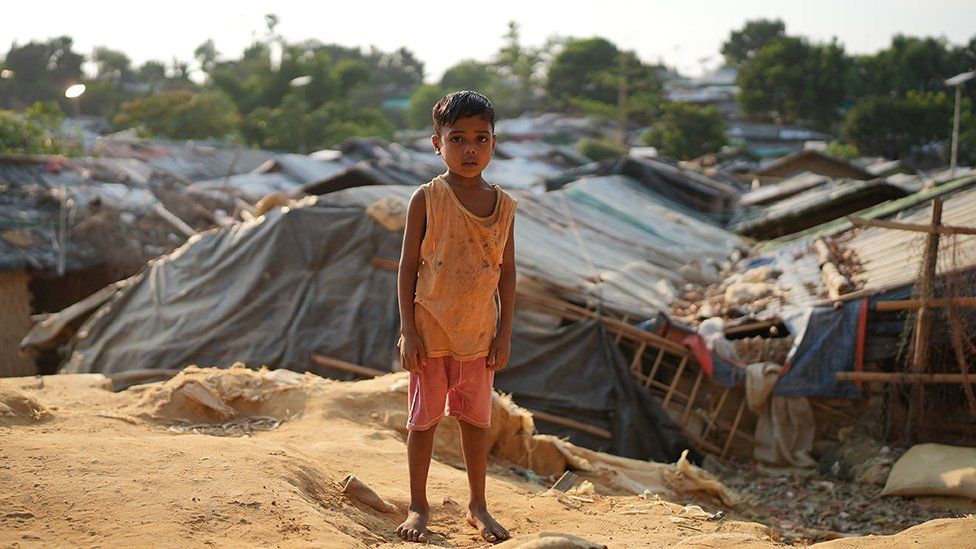
Anwar Sadiq was just hours old when a BBC team first met him in a refugee camp in Bangladesh in September 2017.
A thin cotton cloth was all his mother Mohsena had to cover him, as she cradled her tiny baby under a flimsy makeshift tent, on an empty patch of land.
Five years on, the life of the little boy who entered the world in the most precarious of circumstances remains fragile.
He’s one of half a million children growing up here amid hunger, disease and trauma with little prospect of things getting better – in the camp there is no formal education and few chances of getting a job.
Anwar was born into a life of chaos and danger. His young parents were part of a mass exodus of Rohingya people, who fled their villages in Myanmar in fear, carrying nothing.
“I used to think I would bring him up in a beautiful and peaceful world,” Mohsena told us at the time, “but I am in a refugee camp and this is not a beautiful place at all.”
Now close to a million people live here, surrounded by barbed wire fences and cut off from the outside world.
They fled Myanmar forces who are accused of systematically murdering, raping and torturing the minority Rohingya population – last year the US government said they had committed genocide.
With the very same military now running their homeland, since a coup in 2021, Rohingya refugees have very little chance of going back.
This video can not be played
To play this video you need to enable JavaScript in your browser.
We tracked Anwar down in the vast maze of congested and narrow lanes, which make up what has become the world’s largest refugee camp, near the seaside town of Cox’s Bazar.
We couldn’t believe we were able to find the family, amongst the endless rows of identical bamboo shelters.
In 2017 they were living in the open with no fixed address. Even now they still don’t own a mobile phone.
Today, Anwar has grown into a wide-eyed, shy little boy. He clings tightly to his mother much of the time – resting his head on her lap, he tugs at her pink headscarf.
He also has two younger sisters, two-year-old Sadeqa, and Almar Rufa, who is nearly one.
While the family no longer have to stay under canvas, where they live today is barely better.
They share a modest one-room shelter which has no windows to bring the light in. There are no fans to cool from the sticky heat, and very little ventilation.
Anwar and his sisters don’t even have a bed to sleep in – a mat donated by the United Nations provides scant relief from the hard concrete floor.
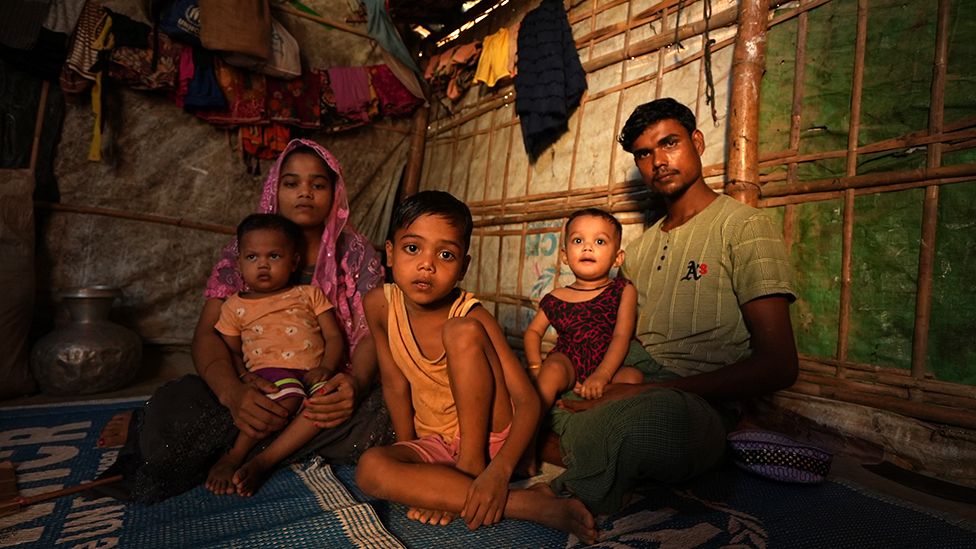
Their few possessions – metal pots and pans, and some clothes strung up on a washing line – have all been given to them by aid agencies.
“Back in Myanmar we had a big strong house made of wooden planks, we owned land, and we farmed it to make a living,” Mohsena says.
She was just 15 and heavily pregnant when she escaped Myanmar’s military in September 2017, with her husband, Nurul Haq.
Her uncle was shot and killed while he was out fishing and Mohsena feared that if they didn’t leave soon, her family would be next.
Mohsena walked barefoot for days, her ankles swollen.
Just as she was crossing the river to neighbouring Bangladesh, her contractions started.
The rickety wooden boat she was in capsized and Mohsena thought she and her unborn baby would drown – her husband saved them.
Tired and drenched, the couple kept going until they made it to a hospital close to the border, where Anwar was born.
It’s amazing he survived. But a few months ago, Mohsena ended up back at the same facility near the camps, worried again that she’d lose Anwar.
He’d come down with fever, his heart was racing and he wouldn’t stop coughing. Doctors said he had pneumonia.
Barely a week goes by without Anwar or his siblings falling sick.
Living conditions for the children in the camp are squalid and unsanitary – they play next to piles of rubbish, inhaling the pungent fumes emanating from the thick black streams of open sewage.
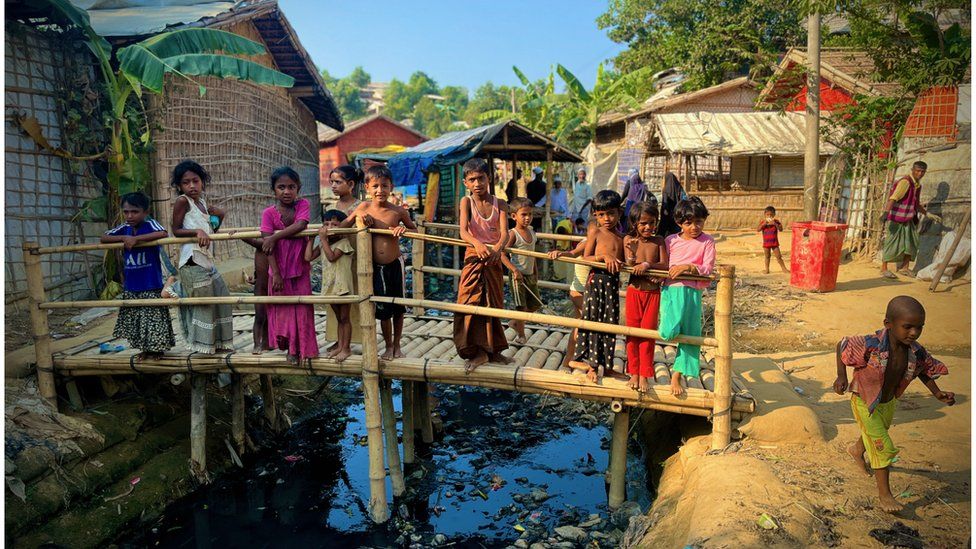
According to the UNHCR, 30,000 babies are born here every year – but this is no place for a child. More than half of children under five here are anaemic, and four in 10 suffer from stunted growth.
“Children are living in unhygienic and congested spaces which leads to different diseases which are contagious and infectious,” explains Dr Tanvir Ahmed from the charity Doctors Without Borders.
Despite their efforts, Dr Ahmed says Rohinyga children are trapped in a cycle of illness, where they fall sick, get treated, before returning to the same unhygienic conditions in the camp, and becoming ill again.
A lack of access to nutritious, healthy food is also a big factor. “Sometimes we can eat, sometimes we can’t,” Mohsena says, with a look of deep sadness on her face.
Rohingya refugees rely almost entirely on aid agencies for food, receiving a fixed monthly food voucher which they can exchange at a UN distribution centre, to buy staples like rice, chicken, vegetables and lentils.
Last month the food aid refugees rely on was cut from $12 (£9.60) a month, to $10. In June it will be reduced yet again, to just $8. The UN-run World Food Programme (WFP) says it was forced to make the cuts due to a drop in international funding – the war in Ukraine has stretched aid budgets and funds from major donor countries like the US.
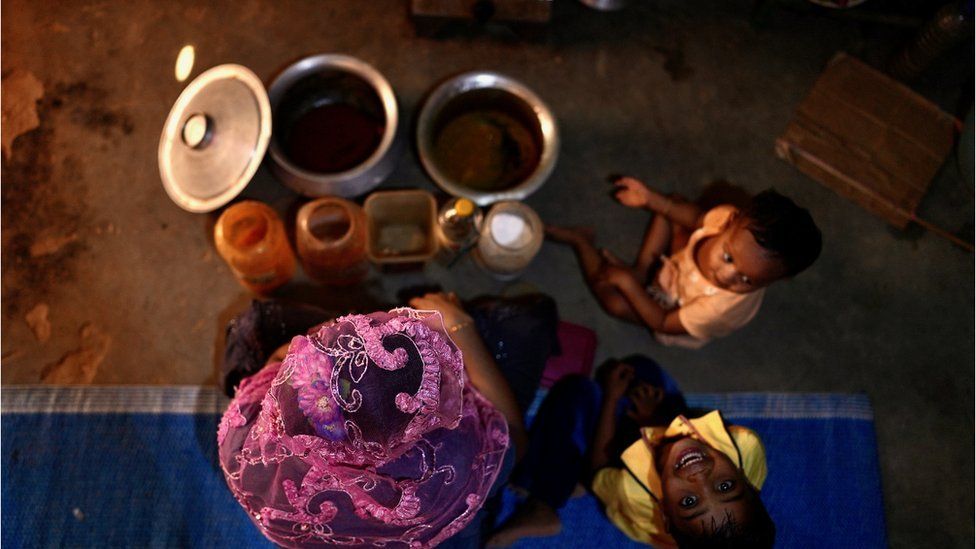
Mohsena has already run out of food this month – plastic containers which should be filled with rice, lentils, sugar and spices are all empty, and the only ingredients left are half a pot of salt and a bulb of garlic.
Until they get their next rations, they are living off a tiny portion of days-old fish and chicken curry, stored in a metal pot on the side, and may have to borrow some food from other families.
“We are constantly worried about how we’ll survive. How can we even earn a living to support our family?” Mohsena says.
Her husband Nurul, who’s 22, manages to pick up just a few days of work a month, doing hard labour or cleaning the stinky sewers, but most days he’s forced to sit at home.
During our visit, he sat quietly in the corner, rocking their youngest child to sleep.
When cyclone Mocha hit the camp, a small tree fell and struck their shelter, bending some of the flimsy bamboo structure.
In a sign of how resilient Rohingya refugees are, Nurul managed to repair the hut hours after the storm passed.
But the refugees aren’t permitted to leave the camps to work, and jobs inside are scarce – 95% of young men in the camps are unemployed, according to a 2022 report from the Norwegian Refugee Council (NRC).
Bangladesh limits any sort of integration between refugees and the local population and won’t even allow Rohingya refugees to be taught the local language or curriculum.
Having hosted the refugees for five years, the Bangladeshi government now wants to repatriate them back to Myanmar as soon as possible.
In a BBC interview, Bangladesh’s Prime Minister Sheikh Hasina called on the rest of the world to shoulder more responsibility.
“They cannot put this burden on us forever,” she said. “Ours is an overpopulated country and our people are already suffering.”
But Rohingya refugees say they will only return to Myanmar if their security is guaranteed – with a civil war continuing that’s an unlikely demand.
The mental toll of this refugee crisis is another untold story.
“I don’t want my son to suffer like me,” Nurul says. “I want him to get an education and start a business.”
But that will be a challenge.
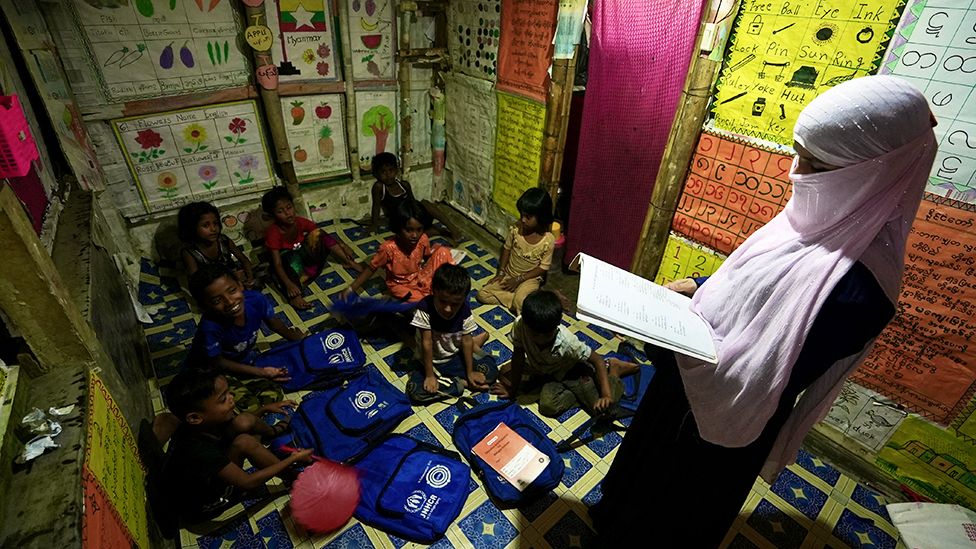
Rohingya children don’t have access to formal education – schools aren’t allowed in the camps, and they can’t attend the local Bangladeshi schools outside.
To plug some of the gap, aid agencies and volunteers have set up makeshift classrooms inside the camp. Unicef says around 5,000 of these so-called learning centres are in operation, many of them staffed by teachers with no formal qualifications.
Anwar goes to one near his home for just a couple of hours a day. And even though he has only ever lived in Bangladesh, his lessons are in Burmese, the language of the country his parents fled.
When Anwar asks Mohsena where he was born, she tells him his life began in this refugee camp.
“Have I seen Myanmar yet, mummy?” he asks her.
“No, you haven’t,” she replies.
In five years from now, where will Anwar be?
Additional reporting and photography Neha Sharma and Aamir Peerzada.
Related Topics
-
-
25 August 2022
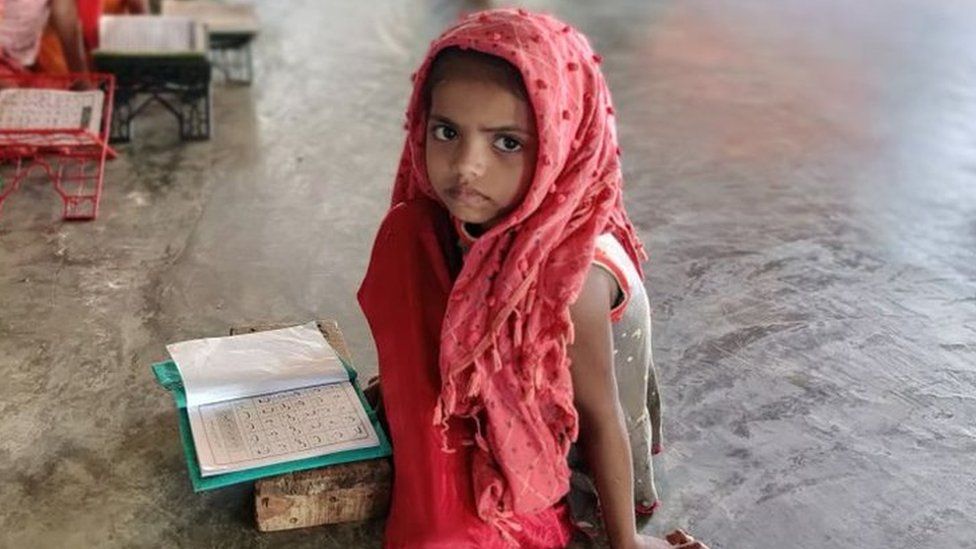
-
-
-
21 March 2022

-
-
-
23 January 2020
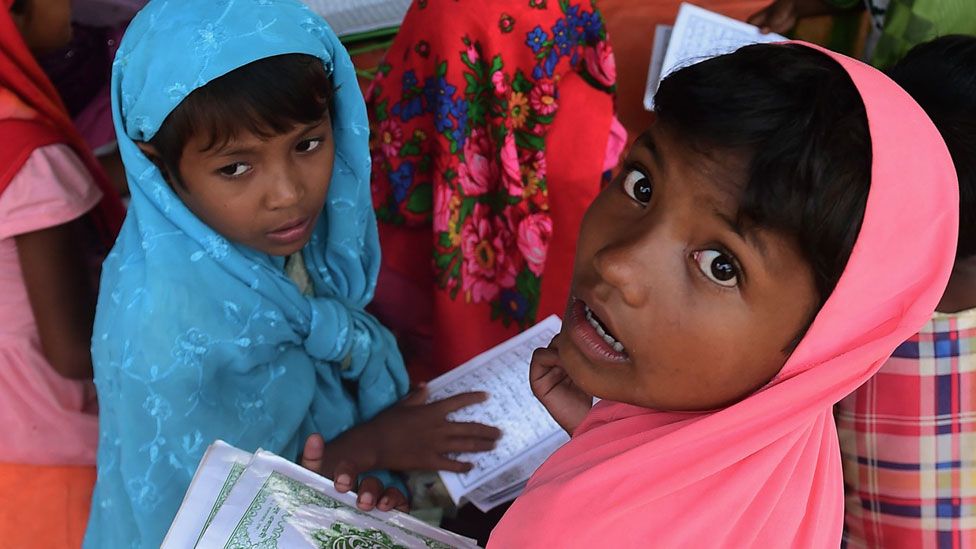
-
